When I design a landscape there’s an order of operations that I always follow. Hardscape elements (decks, patios, walls, etc) get designed first, followed by trees, and then shrubs and perennials. The reason for this is simple: shrubs and perennials can be shifted relatively easily at the time of planting but trees are big enough that they potentially impact everything around them. That can mean limbs growing to touch houses, tree canopies growing into one another, or walks and patios becoming all but unusable. Proper tree placement is critical for a landscape design that will work for decades.
Things to think about when choosing and placing trees
People
People are the #1 most important consideration when deciding where trees should go. What good is it to have a beautiful front walk if people have to step off the path to get around it? Here are some considerations to bear in mind:
- Will the tree drop a lot of unpleasant debris in a busy area? If you have a sweetgum tree you can forget walking barefoot in the summer. An American holly overhanging the bed where you change out annuals all season long becomes a prickly menace.
- If the tree will overhang sidewalks or patios, can it be limbed up to allow people to pass, without making the tree look hacked up?
- Will the tree provide shade or screening or another benefit to the people who use the space?
Structures and hardscapes and other man-made items
Trees can impact everything around them and not always for the better. You need to think about how a tree can negatively impact the permanent structures and spaces around them.
- Is the tree known for weak wood? Weak trees can drop limbs in the slightest storm, potentially damaging whatever’s underneath. Bartlett pears are so notoriously weak that we call them “rental trees”.
- Will the tree, at maturity, be canopying over the house? This can be a gorgeous effect. It can also be deadly.
- Does the tree’s natural shape make sense with where you’re planting it? Some trees branch out more laterally (parallel to the ground) than upright. These will give you many fewer years before you’re pruning branches away from the windows.
- Are the trees you’re considering known for shallow or aggressive roots? Nature is amazing. It happens slowly over time but those innocent tree roots can heave sidewalks.
It’s enough to make you consider trees “the leafy menace” or something, isn’t it? Except that with a little planning and forethought it doesn’t need to be that way. I love trees and can’t plant enough of them. Here’s how you can use trees to create successful, beautiful, long lasting landscapes.
What can this tree do for you?
You can’t control for the other factors unless you have a solid idea of what you want your tree to DO. Are you looking for a shade tree? A specimen evergreen? A screening tree? What about a flowering tree? Unless there’s a tree you’re in love with that you’re designing around, start with the goal and find the tree that fits that. Think of it like buying a car. If what you’re looking for is just reliable transportation that holds a lot of stuff, that could be any number of vehicles on the market.
Know the tree’s size and growth habit
One of the saddest statements I hear (right before we agree to rip out a healthy tree in the absolute wrong place) is “we had no idea it got so big!” You guys. It’s 2015. We have the internet, do some research. Even plant tags can be wrong.
Who can you trust? There’s a lot of bad info on the internet, and bad information when it comes to tree sizing can spell disaster for the innocent homeowner. Here’s what I look for:
- In print, it’s really hard to go wrong with Dirr’s Encyclopedia of Trees and Shrubs (Amazon affiliate link). It’s an industry bible, and at 900+ pages it could be a great multitasker.
- Online, your safest bet is often sites that end in .edu BUT you want to make sure that it’s a college or institution near you. What’s invasive in Florida could be an annual in Minnesota. Plants behave radically differently in different parts of the country, just like people. Example: you drop a New England Patriots fan into a bar full of Dallas Cowboys fans and he’s probably a pretty quiet and reserved, friendly guy. Drop the same Pats fan into a bar in Dorchester and you’ll have a very different experience (much love to all my family in New England!)
- Another resource that I use a lot is the Missouri Botanical Garden’s Plant Finder tool. If you type in the plant you want to learn about, and you’re in most temperate regions of the US, you’ll find a phenomenally detailed page of information that includes USDA hardiness zone, size, growth habits, and a ton of info on the plant and sometimes even its history. If you’re not in Missouri it can be helpful to balance their info with that local to you, but it’s honestly what I turn to first. I’m at the point where I’m probably going to become a member because Catholic guilt compels me.
Look up (what they NEVER do in horror movies)
There’s a variety of street tree called “Wireless” Zelkova, so named because it’s been bred to be appropriate for planting under power lines. If you’re planting ANY tree near powerlines you need to consider what the eventual size will be and how it will potentially conflict with the power lines. Because if the tree does conflict with the lines, the power company will send a crew through and you may end up with something that looks like this:
Avoid the heartache, consider the surroundings.
How do I figure tree spacing?
Tree spacing comes down to a little research and a little math. Here’s how we do it.
Let’s say that because every %^&%^& suburban home in America apparently needs a pointy evergreen on the corner (pet peeve alert), we went to the nursery and decided to bring home a Nellie R. Stevens holly. Missouri Botanical Gardens’ Plant Finder entry on Nellie R. Stevens says it has a spread of 8-12 feet, which I think is conservative for here in Virginia. This is why I recommend cross referencing with a source local to you as well. Exhibit A:
Anyhow, let’s go with the higher number, 12 feet. That’s the eventual (projected, typical) diameter of the tree, meaning the radius is 6 feet. Unless we’re planning to shear this tree every year, you don’t want it any closer to the house than 6 feet. 7-8 feet gives you a safety buffer, and lets you get behind the tree more easily to prune the tree and maintain your home.
“But Dave!” You exclaim. “That puts the far side of the tree 18 feet from my house! Our property line is only 15 feet from the house, that won’t work!”
Yep. That leaves you with two choices. Find another tree, or commit to shearing the heck out of that thing every single year so you can plant it closer. Have fun when that Nellie R. Stevens holly reaches 20-25 feet.
Long term pruning
The above example highlights the fact that with a commitment to pruning, you can cheat the system. For this project I needed something that would fill in an otherwise dead, boring corner, and I wanted something that would pop against the white brick. I wanted a ‘Bloodgood’ Japanese maple. The problem is that they want to get 15 feet across and we’d have to put it pretty close to the house.
Doesn’t matter. In this case, knowing how I wanted to maintain the garden was part of the landscape plan. It’s a slowish growing tree so every year we just do a little pruning to keep it off the house and it just keeps getting prettier and prettier.
What about spacing trees for an allee, or a screen, where I’m repeating trees?
The same principles apply if you’re doing a repeat planting of trees. For an allee, if you want the branches arching into one another you can plant them rough the mature diameter apart. The tree has a 20 ft mature spread? Place the trunks 18-20 feet on center. Want space between the trees? Add some feet to that dimension.
For screening trees you’re walking a fine line. Too far apart and you’ll be waiting forever and a day for any privacy, but too close and you’ll have unhealthy trees. Take a tree like an Emerald Arborvitae, with an average width of 4 feet. Planting them 4 feet on center gives you good start and they’ll fill in nicely. If you’re starting with small trees you may be tempted to halve that, but I wouldn’t.
And when deciding how far apart to plant Leyland cypress, my preferred method is to leave them at the nursery and let them become someone else’s problem.
That’s a quick overview of selecting and planting trees in your backyard. This is one of those questions that comes up time and time again, so hopefully this helps. If you want more info like this but delivered right to your inbox, sign up for my newsletter in the box on the right! You’ll receive my newsletter twice a month and that’s it. No crazy sales spam in between, and I never sell, rent, or share my lists. Let’s make some beautiful landscapes!

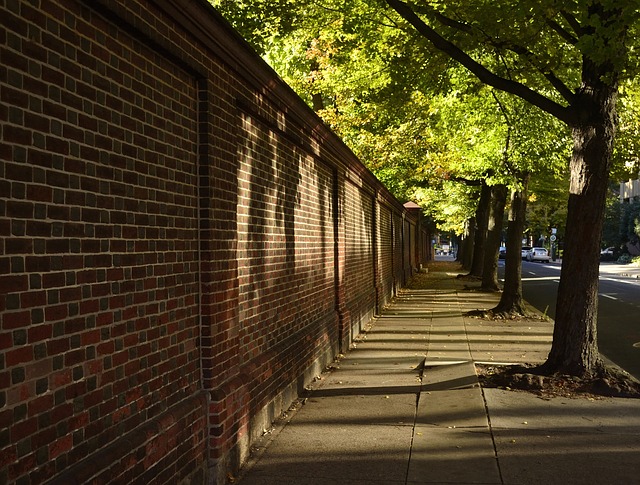
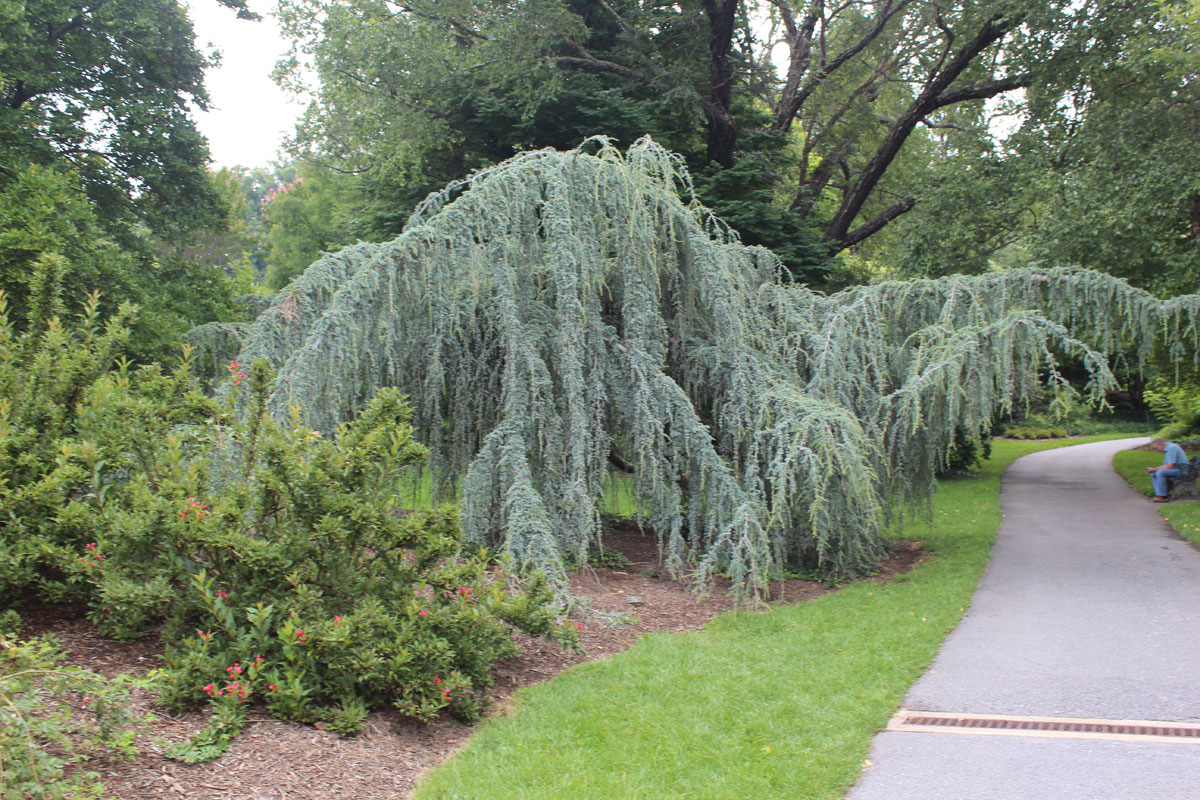
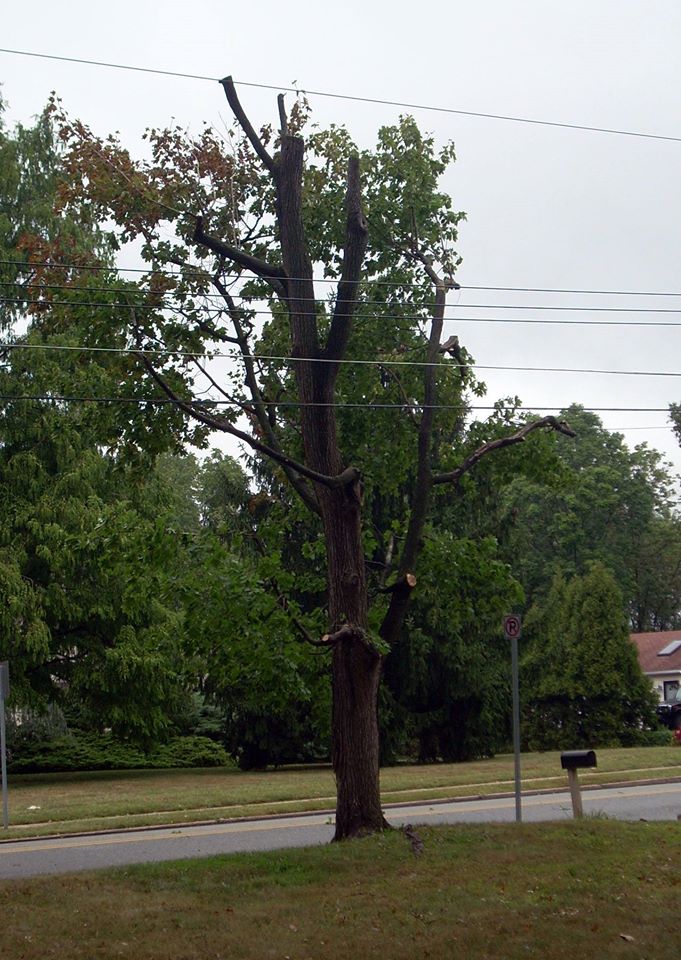
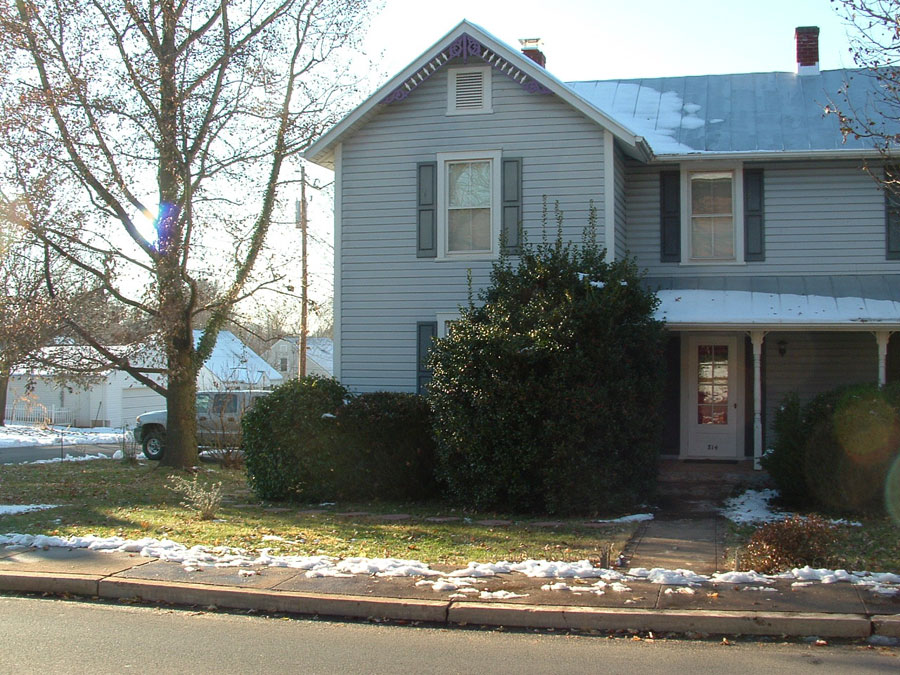
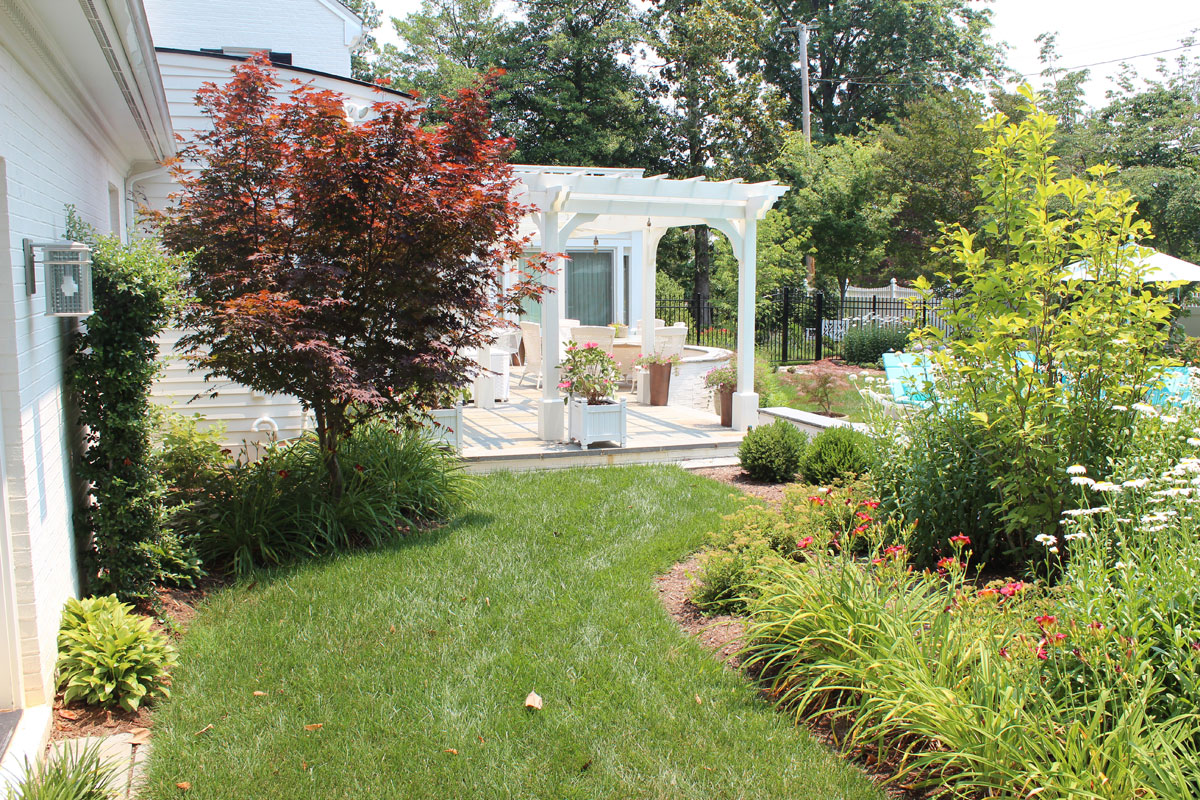
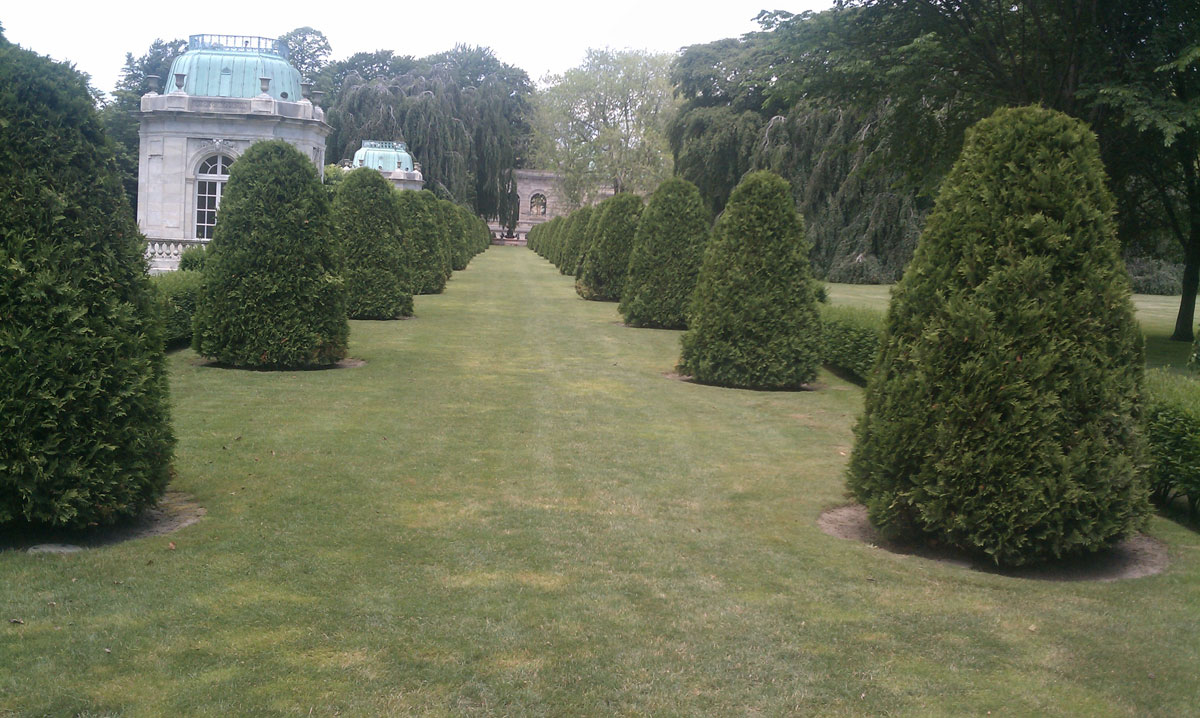
I am a Horticultural student at St. Clair College in Windsor, ON. Canada. I would like to say a huge thank you for your information as I am finding the design portion of this course “hair-pulling, NOT FUN’ Your information makes the instructions make sense and I thank you.
Hi Kathy, glad to help! Just distill everything down to “how can I make this the best experience possible for the people who will use the landscape?” and you’ll create wonderful things. Good luck!
Also, if you’re a hort student make sure you seek out Emergent on Facebook. It’s a private group for up and coming pros in the horticulture field. If such a thing had existed when I was starting out my career may have looked radically different.